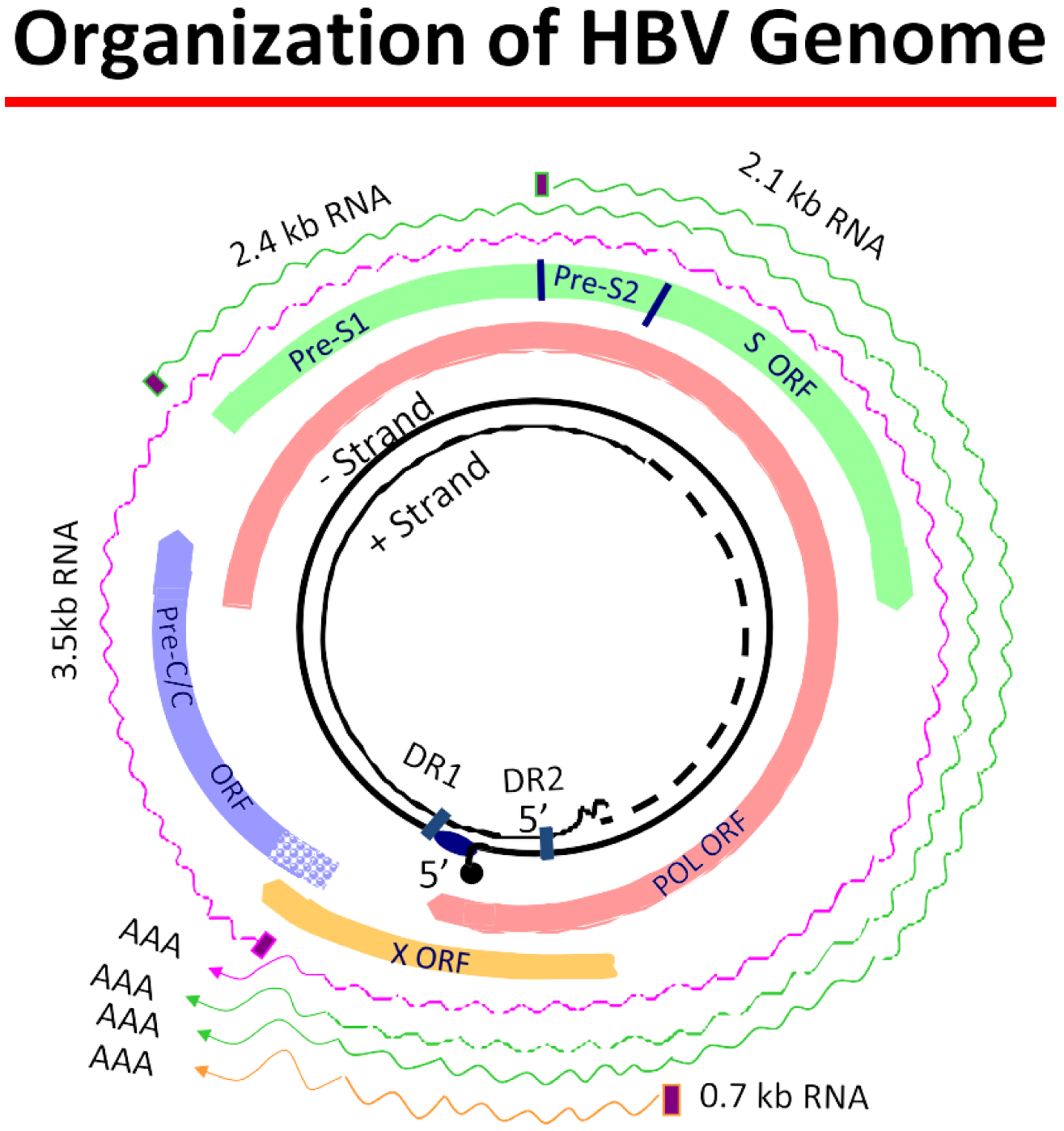Fig. 1.

The viral genome is represented by the inner, black circles. It is a relaxed circular partially double-stranded DNA. The DNA’s circularity is maintained by 5°-cohesive ends containing 2 11-nucleotide direct repeats that are important for viral replication. The 2 strands are asymmetric. The minus strand is genome length and is covalently linked at its 5°end to the terminal protein domain of polymerase. The positive strand is of variable length and has a capped oligoribonucleotide on its 5° end. The genome has 4 open reading frames, which overlap due to the compact nature of the genome. These are all encoded by the minus strand and consist of the polymerase, precore/core, pre-S1/pre-S2, s/pre-s, and X. Finally, the outer wavy lines represent 4 viral messenger RNA (mRNA) species. The 3.5-kb pregenomic mRNA is genome length and the other 3 are subgenomic length. All terminate in a poly A tail.
